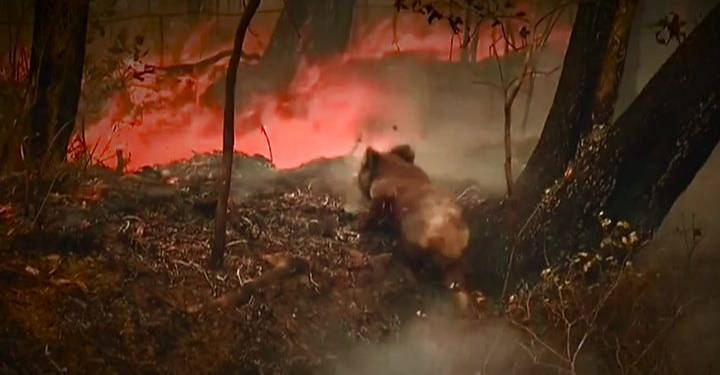The images of the poor animals being burnt alive in the massive Australian bushfires can melt even the coldest of hearts as the world is given a desperate wake-up call to contain the climate change or risk being wiped out. Over a billion animals have been affected or killed in the bushfires which include some rare species which aren’t found anywhere else on Earth. The Print reports that the bushfires have pushed at least 20 threatened species closer to extinction.
The Print estimates that most of the range and population of between 20 and 100 threatened species will have been burnt. The continued existence of such species was already tenuous. Their chances of survival are now much lower again. For example, the long-footed potoroo exists in a very small range mostly in the forests of Victoria’s East Gippsland. It’s likely intense fires have burnt most of these areas. On South Australia’s Kangaroo Island, one-third of which burned, there are serious concerns for the Kangaroo Island dunnart, an endangered small marsupial, and the endangered glossy black cockatoo, whose last refuge was on the island. Both species have lost much of their habitat. Many threatened plants are also affected: in NSW, fires around Batemans Bay have burnt some of the few sites known for the threatened Spring midge orchid.
“One hundred per cent — all of our records since 1990 are within the burned fire scar. The entire range of the species has been burned,” said Rosemary Hohnen, an ecologist who spent more than two years surveying the Kangaroo Island dunnart. “They’re in true peril, real peril of extinction.” “We’re not just talking about koalas — we’re talking mammals, birds, plants, fungi, insects, other invertebrates, amphibians, and bacteria and microorganisms that are critical to these systems,” said Manu Saunders, a research fellow and insect ecologist at the University of New England in Armidale. Individual animals might survive, but when their habitat is gone, “it doesn’t matter,” Saunders said. “They’ll die anyway.”
More than 6.3 million hectares (63,000 sq km or 15.6 million acres) have been burned so far – one hectare is roughly the size of a sports field. Firefighters are spraying water and fire retardant from planes and helicopters as well as from the ground. But fighting bush fires is extremely difficult and often authorities have to focus on just stopping the spread, rather than putting the fire out. The spread can, for instance, be contained by digging earth boundaries to stop the flames from spreading. The priority is saving lives. The fires aren’t going to stop anytime soon and will continue to wreak havoc in Australia for the foreseeable future. The fact why the figure of one billion animals who have succumbed to the fires is because even those fortunate to have survived have seen their habitat entirely destroyed, leaving the survivors vulnerable even once the fires have gone. So the true scale of loss isn’t yet clear.
The bushfires will have a massive impact on the global environment in the weeks to come. In a concerning development, smoke from Australia fires has reached as far as South America. Smoke from bushfires in Australia has travelled some 11,000 kilometres (6,800 miles) to South America. Last week, the highest levels of carbon monoxide in the world were measured over the “clean” South Pacific Ocean. In Geneva, the UN World Meteorological Organization (WMO) spokeswoman Clare Nullis told reporters the smoke had “probably” reached the Antarctic.
It goes without saying that if urgent steps aren’t taken to contain the climate change, another tragedy of this level is only a matter of time, which might as well be the end of Earth as we know it.


































